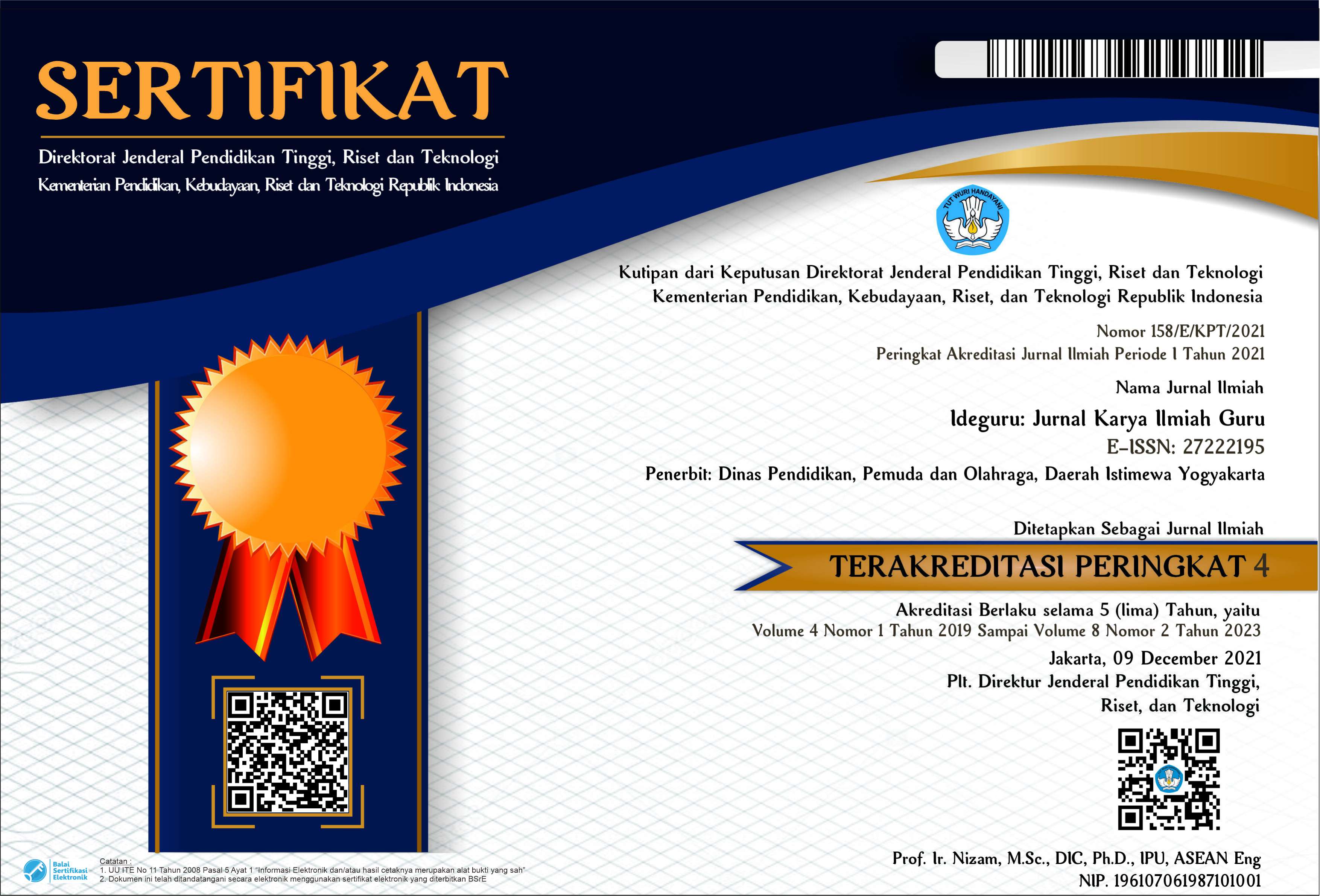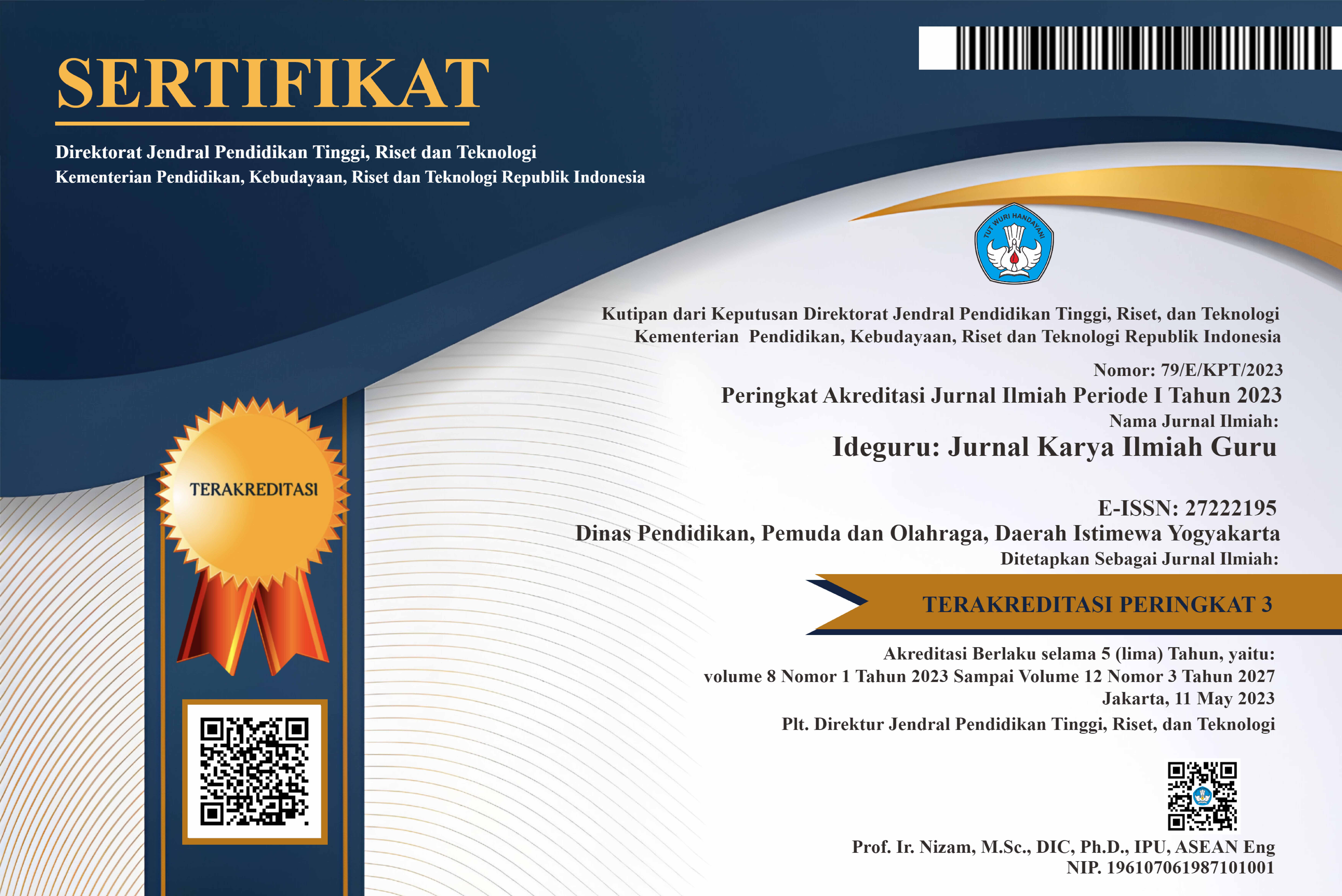Peningkatan Kemampuan Berpikir Analisis pada Materi Genetik Melalui Model Pembelajaran Guided Inquiry Terintegrasi Virtual Lab
Abstrak
Materi genetik adalah salah satu materi yang abstrak, rumit, dan sulit untuk dipahami, sehingga untuk mempermudah pemahaman dipilih model pembelajaran Guided Inquiry yang terintegrasi dengan media virtual lab. Tujuan Penelitian Tindakan Kelas (PTK) ini adalah untuk menentukan apakah model pembelajaran Guided Inquiry yang terintegrasi dengan virtual lab dapat meningkatkan kemampuan berpikir analisis 32 peserta didik pada Kelas XII IPA 3 pada SMAN 7 Yogyakarta pada materi genetik. PTK dilakukan dalam 2 siklus, yang masing-masing berisi tahapan perencanaan, pelaksanaan, observasi, dan refleksi. Data penelitian berbentuk outcome, portofolio, kinerja, dan respon peserta didik. Teknik pengumpulan data memakai teknik tes (hasil pembelajaran) dan bukan tes (tugas, kinerja, dan kuesioner). Analisis data dilakukan secara kuantitatif dan kualitatif. Hasil analisis menunjukkan adanya peningkatan sehingga dapat disimpulkan bahwa model pembelajaran Guided Inquiry terintegrasi virtual lab dapat meningkatkan kemampuan berpikir analisis pada peserta didik Kelas XII IPA 3 SMAN 7 Yogyakarta pada materi genetik dari 75,68% menjadi 78,08%.
Data Unduhan PDF
Copyright (c) 2021 Ariswati Baruno

This work is licensed under a Creative Commons Attribution 4.0 International License.

 DOI:
DOI:














